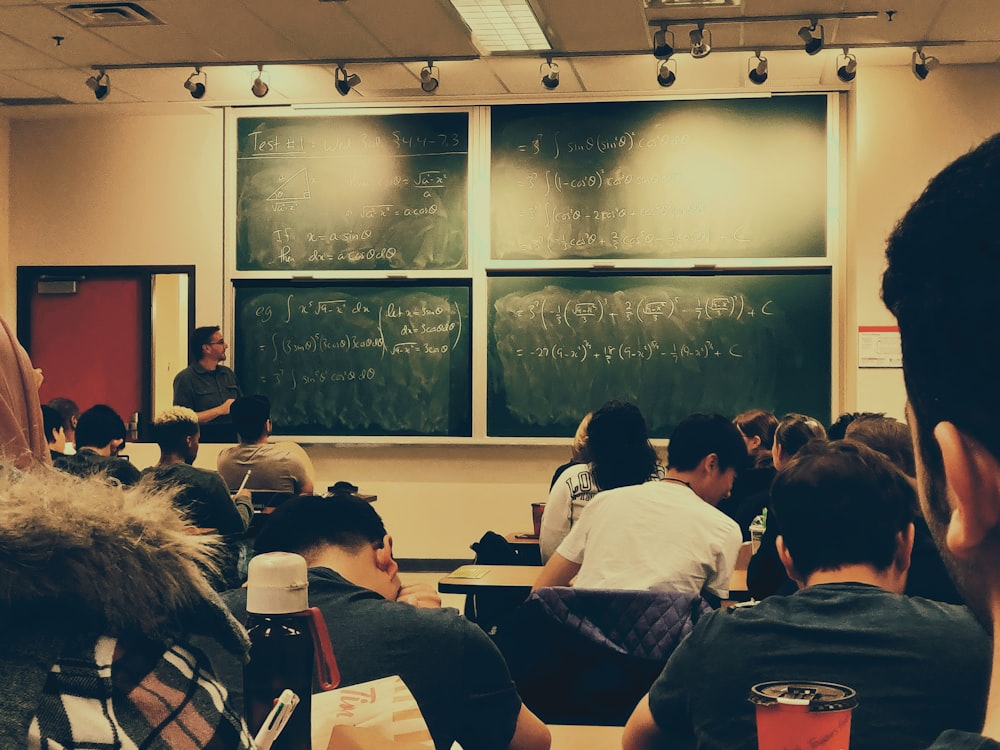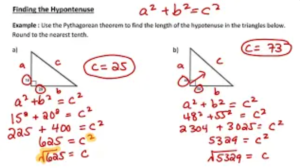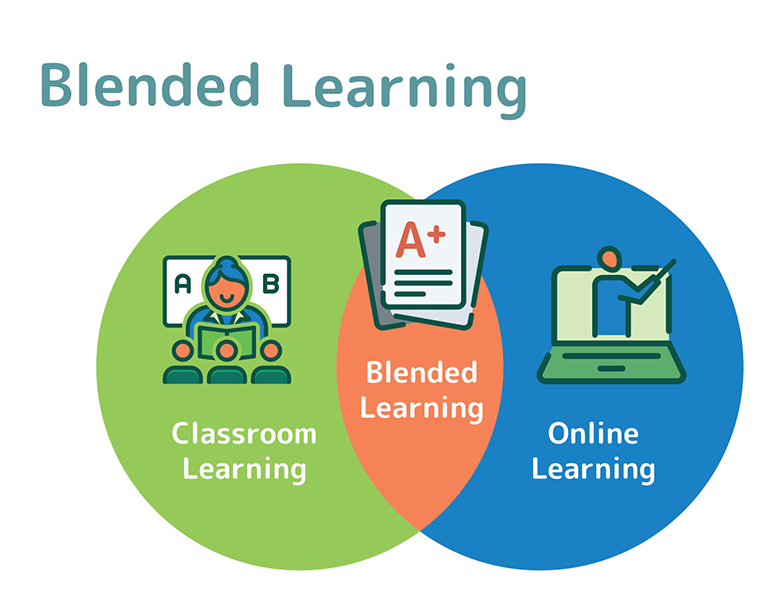This week in class we learned all about blended learning. We looked at the (many) definitions of it and discussed the different ways institutions classify and implement it. Needless to say there isn’t a consensus on what makes an environment truly blended.
Once again I was quite interested in Katia’s lecture which was mixed in with some small-group discussion on the topic. I was reflecting on my own teaching practice and the ways that I’ve utilized this style of teaching and learning in my own classrooms over the years. While I could spend quite a bit of time outlining several ways I’ve incorporated technology over the years (quick shout out to the pandemic), I’m more interested in exploring HyFlex learning and the ways this particularly complex and complicated type of blended learning is carried out in different institutions. In my research I hope to find some information about the real-life successes and challenges of offering a course that is authentically HyFlex.
The Prompt:
Research and discuss HyFlex learning (see Beatty’s work). What are the advantages and disadvantages of this model? Is this a feasible model for learning or just a trend of the moment?
According to his book, Brian Beatty describes HyFlex (or hybrid flexible) learning as “…multi-modal courses which combine online and onground (classroom-based) students…”. Brian Beatty is an associate professor at San Francisco State University and is credited with developing the HyFlex approach. Simply put, HyFlex learning offers flexibility to students while maintaining the same level of instruction (this description from Barnard College continues to describe this method clearly. Sounds pretty awesome, right? Parts of it certainly are, like the ability to provide learning opportunities to meet the physical, social, and environmental needs of all students. There are, however, some drawbacks. I’ll do my best to outline the benefits and challenges of the HyFlex approach below.

The Upside
As touched on above, HyFlex learning is just how it sounds – flexible! This is a significant benefit to students with a wide variety of needs and preferences. Further, it serves to challenge a more traditional style of instruction where teachers hold the majority of control for how learning takes place, whether that be face-to-face, online, synchronous, asynchronous, or some prescribed combination of these or other modes of instruction. In the “Student Experience” section of his book, Beatty states that “The HyFlex course design proscribes nothing about the way multiple perspectives are represented or supported in the specific content and/or activities used in a course, but does encourage a variety of ways that students can access content and complete course activities”. Described in this way, HyFlex learning reaches a significant number of students in ways that other more rigid types of instruction are incapable of. In this chapter, Beatty goes on to explain how the hybrid-flexible model shifts ownership of learning from teacher to student, making the learner significantly more responsible.
On the surface, and from the perspective of the learner, the HyFlex option is a great one. If implemented true to its form, HyFlex allows the learner to choose when and how they learn during each class time. And even then, asynchronous options may be available for those unable to attend during a class’s allotted timeframe. This flexibility gives learners from all stages or circumstances of life the opportunity to pursue higher education. Students who are working while going to school have the freedom to continue earning an income while scheduling around their job. Students who have family responsibilities of their own can dictate their educational pursuits around the high demands (and unpredictability) of parenting. Students who struggle with mental health challenges can adjust their school schedule to suit their needs on a day-to-day basis, which is a major advantage for those who experience anxiety or depression. Physical disabilities can also be a barrier for students, one that HyFlex learning allows students to freely participate in from an environment that is more conducive for them. Ultimately, HyFlex learning is kind of a dream for students who are motivated to learn but want or need the freedom and flexibility to complete it on their own terms, in their own way.
The Downside
As Beatty goes on in his book, he addresses the costs and benefits of a HyFlex environment. He points out that “[i]n a HyFlex class, the instructor is challenged to design effective learning experiences for students in both online and in-class modes”. As Katia touched on in class this week, this is quite difficult for teachers to plan for. This really got me thinking about myself planning for a truly HyFlex class. Let’s say I had 20 students in a post-secondary class. The class runs Tuesdays and Thursdays for an hour and a half each day. On Tuesday, 5 students attend in person, 10 attend synchronously, and 5 asynchronously complete the coursework on their own time, following along using the recorded instruction. Then on Thursday, 13 attend in person, none attend online, and the remainder of the class chooses the asynchronous route. Yikes! The time, effort, and meticulous attention to detail that would have to go into planning for all of these variables would be exhausting, especially if it is the first time creating the course material. What a challenge to attempt to plan for unpredictability. The “plan” would have to be flexible but also comprehensive and include reasonable options for all scenarios. In addition, it’s hard to believe that the quality of instruction wouldn’t be impacted having to juggle so many possible learning situations. Ultimately, a HyFlex learning environment would be tremendously difficult to plan for, especially upfront. It would also need to be carefully implemented to be done well and adequately measure up to its claims.

I was curious about how institutions are currently implementing HyFlex learning. A quick Google search helped me with that:
York – some classrooms are equipped with technology that allows remote participation in real time; there is no mention of an option for asynchronous learning
Carleton – the description outlines the options of in-person, online, or asynchronous learning where the student is able to choose their mode of attendance on a day-to-day basis
Columbia – the description mirrors Carleton’s, and includes some helpful graphics for instructors creating their courses. Also included are sample lessons. I took a peek at one and wanted to share a section of one:

This is just a small section – 5 minutes – out of a 50 minute lesson, and if I imagine myself carrying it out, it would feel like teaching three classes at once. Over time, I know this would get easier and become increasingly seamless for the instructor, but initially, it would be a major undertaking.
A Final Word
Anytime learning is made to be more accessible to more students is a positive thing. Therefore I think that it is a feasible model for learning. HyFlex is an attractive option to students looking for a non-traditional environment to better suit their needs, whatever they may be. This method of instruction can help students learn successfully in a variety of ways, assuming that the student is motivated enough to do so. Teaching a HyFlex course does, however, appear to be a daunting task, involving a significant amount of preparation. If well-planned and carried out, a HyFlex course could be the perfect option for self-disciplined students needing a higher degree of flexibility.














 exploring the effective application of online and blended learning in adult education, particularly within work contexts. Having lived and taught in Nigeria, the United Arab Emirates, and Japan, my experiences in different contexts have greatly influenced my perspectives and interactions with learners and local communities.
exploring the effective application of online and blended learning in adult education, particularly within work contexts. Having lived and taught in Nigeria, the United Arab Emirates, and Japan, my experiences in different contexts have greatly influenced my perspectives and interactions with learners and local communities.

